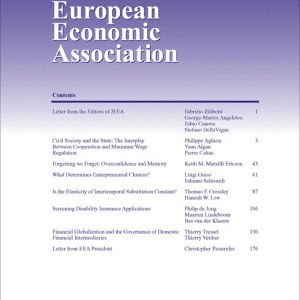
Fonseca, R., Michaud, \.C., Galama, T. and Kapteyn, A. (2021). Accounting for the Rise of Health Spending and Longevity Journal of the European Economic Association, 19(1):536--579.
-
Affiliated author
-
Publication year2021
-
JournalJournal of the European Economic Association
We estimate a stochastic life-cycle model of endogenous health spending, asset accumulation, and retirement to investigate the causes behind the increase in health spending and longevity in the United States over the period 1965-2005. Accounting for changes over time in taxes, transfers, Social Security, income, health insurance, smoking and obesity, and technological progress, we estimate that technological progress is responsible for half of the increase in life expectancy over the period. Substantial growth in health spending over the period is largely the result of growth in economic resources and the generosity of health insurance, with a modest role for medical technological progress. The growth in spending does not come from changes in a single source, but sources jointly interacted to increase spending: Complementarity effects explain up to 26.3% of the increase in health spending. Overall, for those born in 1940, the combined changes in resources and health insurance that occurred over the period are valued at 35.7% of lifetime consumption.